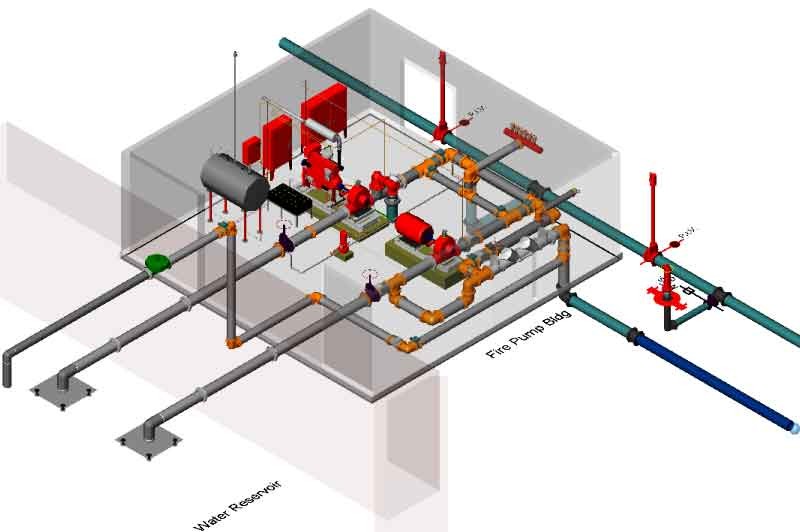How do simulations support the design of sprinkler systems?
Designing fire protection systems is a process that requires precision and advanced analytical tools. Thanks to the development of digital technologies, fire protection system simulations are becoming an important element supporting designers in optimizing the operation of sprinkler systems. Can virtual tests replace traditional methods of assessing efficiency? In this article, we will look at how modern solutions support design processes and increase building safety.
Fire protection system simulations in sprinkler system design
Advanced digital technologies enable simulations of fire protection systems, which allow for precise representation of fire conditions in buildings of various specifications. Using mathematical models and advanced algorithms, specialists can analyze parameters such as system response time, fire suppression efficiency, or the impact of different fire development scenarios. This allows for minimizing the risk of design errors and adapting systems to specific building conditions.
In practice, design of fire protection systems is based on the analysis of heat distribution, dynamic interaction between fire factors and sprinkler operation, and on the assessment of the system’s efficiency in various spatial configurations. Thanks to modern technologies, it is possible to optimize the arrangement of sprinklers in places with an increased risk of fire, such as sprinkler systems for warehouses. As a result, companies implementing fire protection can offer customers solutions tailored to their needs, ensuring the highest level of protection.

System Performance Analysis Using Digital Models
The effectiveness of fire protection systems can be assessed thanks to tools that enable modeling of fire protection systems, which allow for the identification of potential weak points already at the design stage. Simulations provide precise data on sprinkler performance, water distribution and fire extinguishing ability in various scenarios.
One of the most important aspects that designers pay attention to is sprinkler distribution analysis, which allows for the assessment of the uniformity of water coverage and the identification of insufficiently protected areas. It is worth emphasizing that this approach is particularly important in the case of large facilities, such as sprinkler systems for logistics centers, where the sprinkler distribution must take into account both the division of space and the specificity of the stored materials.
The introduction of modern digital tools in the design of fire protection systems significantly improves the efficiency and safety of facilities. Fire protection system simulations, which allow for precise assessment of the system’s effectiveness and optimization of its layout, are becoming a standard in the fire protection industry. Thanks to digital modeling and online sprinkler tests, designers can provide solutions tailored to specific building conditions, which increases the level of protection and the efficiency of the systems.
